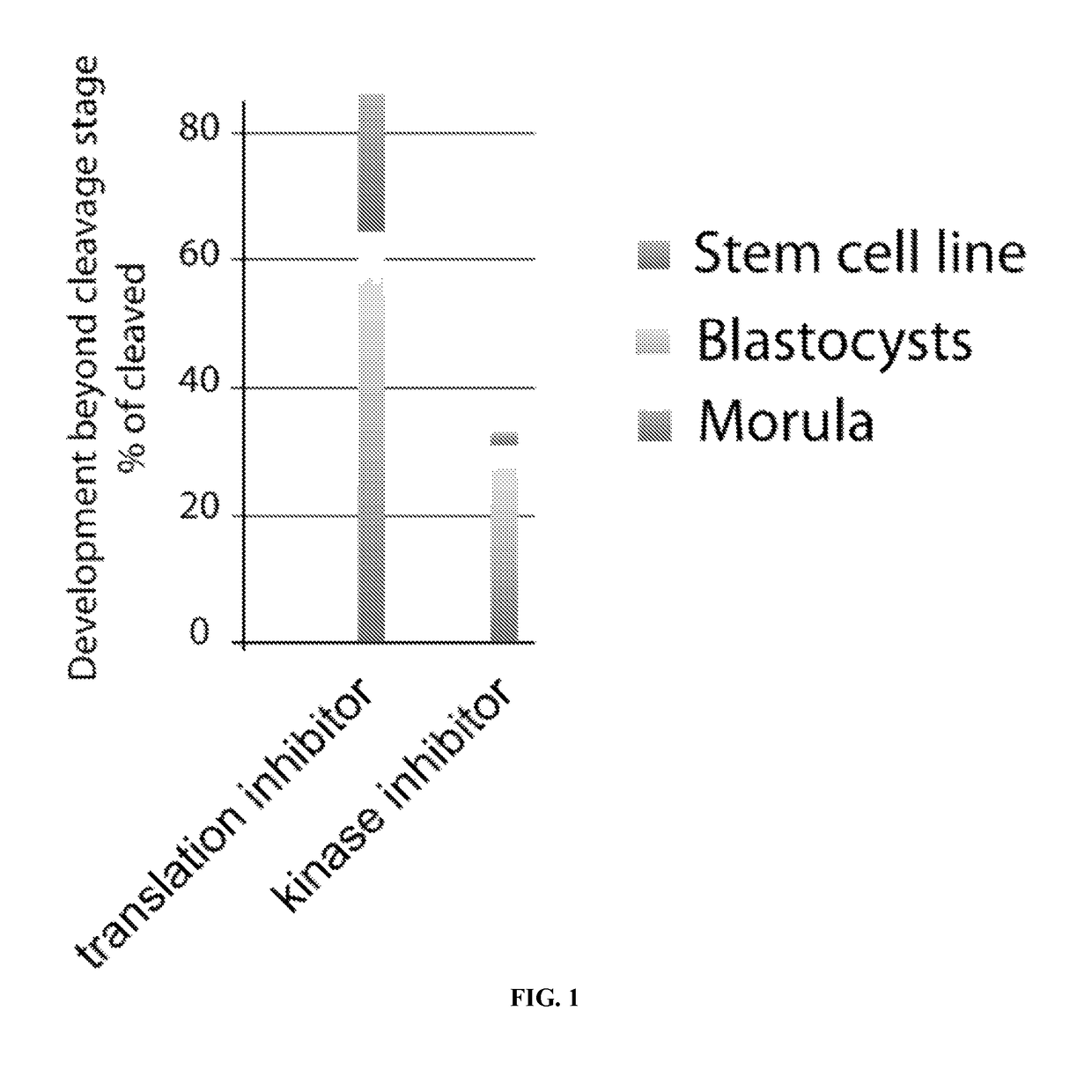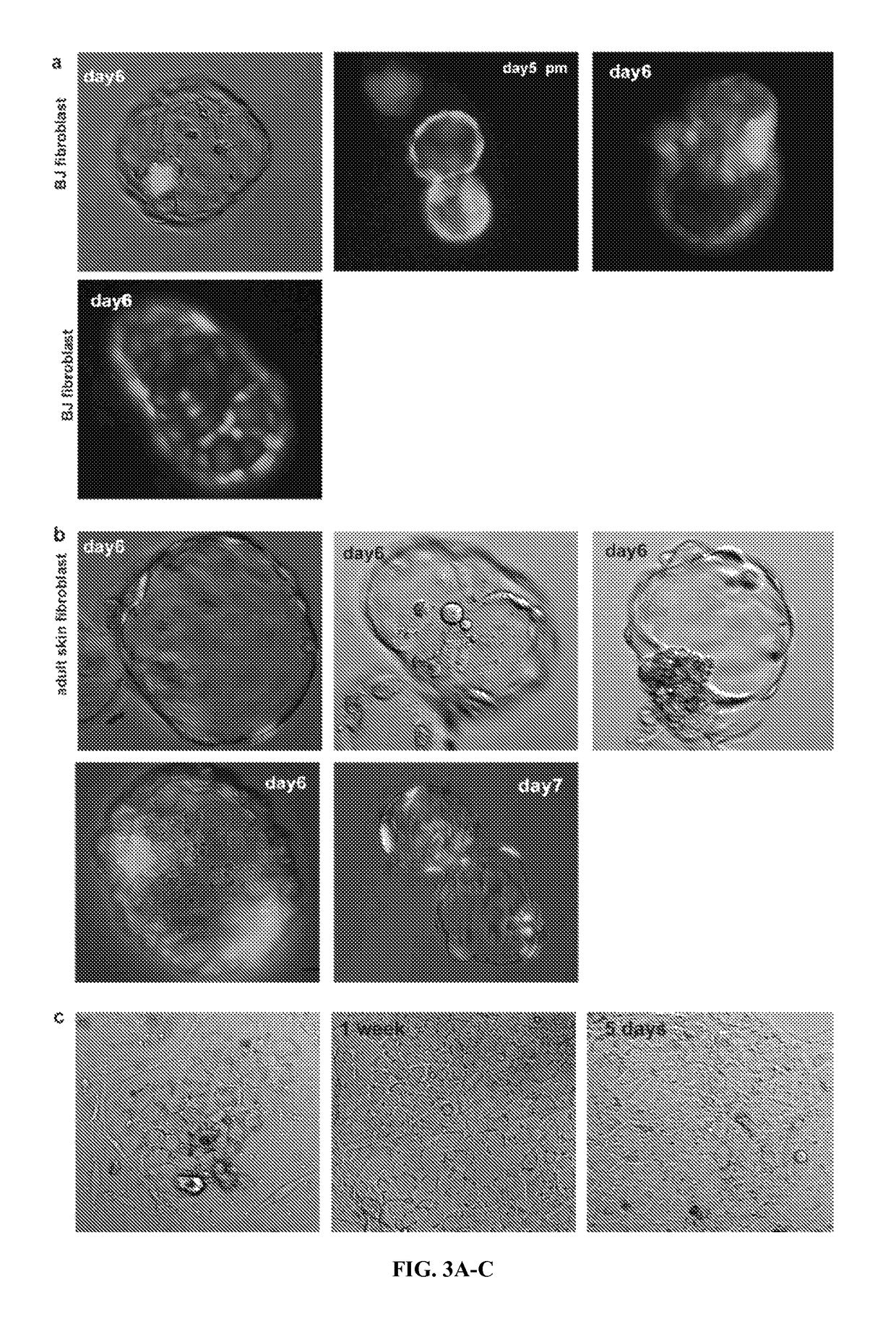Somatic cell nuclear transfer methods
a technology of nuclear transfer and somatic cells, applied in the field of somatic cell nuclear transfer methods, can solve the problems of preventing further development or stem cell derivation, and achieve the effect of minimizing cell membrane damage and minimizing cell membrane damag
- Summary
- Abstract
- Description
- Claims
- Application Information
AI Technical Summary
Benefits of technology
Problems solved by technology
Method used
Image
Examples
example 1
[0089]Human pluripotent stem cells have the ability to self-renew indefinitely, and give rise to cell and tissue types of all three germ layers, enabling the study of human disease in cellular models (for review see (Robinton and Daley, 2012)). More recently, human embryonic stem cells have been approved for use in clinical trials aimed at determining the safety of transplanted cells in spinal cord injury and macular degeneration (Schwartz et al., 2012). The derivation of pluripotent stem cells from somatic cells holds the promise to use autologous cells for cell replacement for degenerative diseases such as diabetes or Parkinson's Disease (Tabar et al., 2008).
[0090]The transfer of somatic cell nuclei into oocytes can give rise to pluripotent stem cells that are consistently equivalent to embryonic stem cells1-3, holding promise for autologous cell replacement therapy4,5. Though methods to induce pluripotent stem cells from somatic cells by transcription factors6 are widely used in ...
example 2
[0114]The transfer of somatic cell nuclei into oocytes can give rise to stem cells and cloned animals, but often development fails at early cleavage stages with an arrest in cell proliferation. We conducted a detailed analysis of the mechanisms of developmental arrest after nuclear transfer into human and mouse oocytes and found that defects in chromosome segregation are frequent, arise prior to transcriptional activation of the genome, and required the transition through the first embryonic interphase. Chromosome segregation errors involved the formation of bridges, acentric chromosome fragments, characteristic of replication-induced errors. Their frequency was greatly increased with the state of differentiation of the donor nucleus, but reduced by the addition of histone deacetylation inhibitors. These results demonstrate that the cell type specific duplication and segregation of the genome is a defining feature of a cellular state and a limiting factor for cell cycle progression ...
example 3
Use of Metaphase Somatic Cells for Nuclear Transfer
[0129]Experiments were performed in which the nuclear genome was removed from an oocyte at the metaphase II stage to form an enucleated oocyte. A somatic cell at mitosis was then transferred into / fused with the oocyte using inactivated Sendai virus. The reconstructed oocyte was then cultured in the incubator (6% CO2, 5% 02, 89% N2, at 37° C.), for 2 hours. The reconstructed oocyte comprising the somatic cell genome was then placed in an incubator and activated using a calcium ionophore at a concentration of 2.5 μM in calcium free medium to induce a calcium pulse of a physiological amplitude. Upon activation, the egg was placed in medium containing 10 μg / ml puromycin (a translation inhibitor). The medium also contained 10 ng / ml of scriptaid—a histone deacetylation inhibitor. After 3.4-4 hours, the medium was changed to a medium containing only 10 ng / ml scriptaid (but not puromycin) and maintained for 15 to 17 hours post activation. T...
PUM
| Property | Measurement | Unit |
|---|---|---|
| size | aaaaa | aaaaa |
| time | aaaaa | aaaaa |
| time | aaaaa | aaaaa |
Abstract
Description
Claims
Application Information
 Login to View More
Login to View More - R&D
- Intellectual Property
- Life Sciences
- Materials
- Tech Scout
- Unparalleled Data Quality
- Higher Quality Content
- 60% Fewer Hallucinations
Browse by: Latest US Patents, China's latest patents, Technical Efficacy Thesaurus, Application Domain, Technology Topic, Popular Technical Reports.
© 2025 PatSnap. All rights reserved.Legal|Privacy policy|Modern Slavery Act Transparency Statement|Sitemap|About US| Contact US: help@patsnap.com



